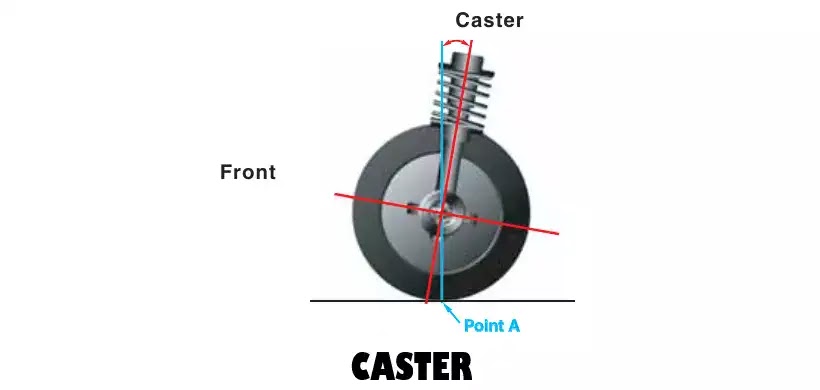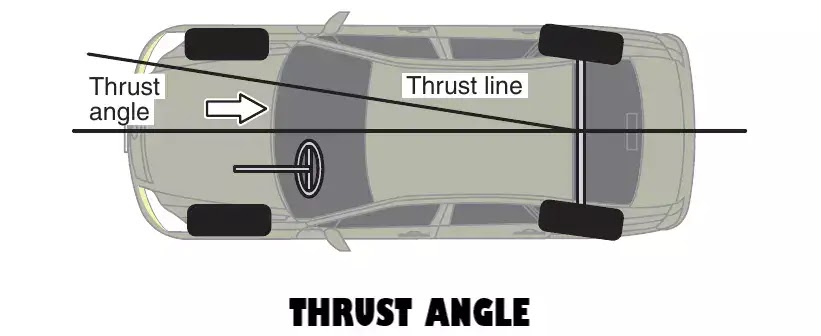How Often Should Wheel Alignment Be Done
Wheel alignment is the angle and position with which wheels are attached to the vehicle body. Wheel alignment is an important function that directly affects vehicle performance such as running, turning, and stopping.
Wheel alignment is set up on the front and rear wheels, and it can be measured with the vehicle in the straight-ahead position and stopped on level ground.
Front Wheel Alignment
The role of the front wheel alignment is to produce the returning force on a steering system and reduce the steering wheel turning
force and to secure the driving stability and to prevent premature tire wear.
Factors of Front Wheel Alignment
The following are the main important items:• SAI* (kingpin inclination) *: Steering Axis Inclination
• Caster
• Camber
• Toe-in, toe-out
How often wheel alignment should be done
Wheel alignment adjustment to the specification is performed at the production plant. Is it necessary to adjust the wheel alignment again? In the following cases, the wheel alignment might vary from the specification. Therefore, the adjustment is required when an accident, bumping against a curbstone or running off into a gutter, and a deterioration of a rubber bushing, shock absorber, or springs.
Front Wheel Alignment Fundamentals
SAI: Steering Axis Inclination
The purpose of Steering Axis Inclination is to produce the returning force on a steering system and improve the straight-ahead running performance, to reduce the steering effort, and to reduce the kickback (kickback impact force to a steering wheel from a tire through a steering system).
When looking at the front wheels from the front of the vehicle, the upper part of the kingpin appears to be on an inward angle. The component, viewed from the vehicle front, of the angle between the kingpin centerline and the vertical line, is called the kingpin inclination. The kingpin inclination varies among models. It is generally in the range of 6 to 9 degrees.
Caster
The purpose of the caster is to improve the straight-ahead running performance and to reduce the steering effort.
When looking at the vehicle from the side, most kingpins will be set at an angle as shown in the figure. This angle is called the
caster and is generally in the range of 0.5 to 4 degrees. Thus, the wheel running resistance will pull the contact point A backward, which prevents side runout. This also tends to return the steering wheel back into a straight position. This is the so-called caster effect, and it stabilizes the direction of travel and helps the steering wheel return to its original position.
Camber
The purpose of the camber is to maximize the tire gripping force, keeping the tire angle as vertical to the road surface as possible for the wheel travel up and down caused by the load fluctuation or vehicle body rolling.
When looking at the front of the front wheels as shown in the figure, one wheel appears to be leaning outward and one appears to be leaning inward. The angle between the vertical line and the centerline of the wheel is called the camber. The camber varies among the models, but generally, the camber angle is between 0.5 and 2 degrees. The wheel shown on the right in the figure which is leaning outwards at the top is said to have a positive camber while it is said that the wheel that leans inward at the top has a negative camber.
Toe-In, Toe-Out
The purpose of toe-in, toe-out is, tires tend to be toe-out due to a camber angle and/or rolling resistance, etc. Toe-in is
set up beforehand to prevent the wheels from tending to toe-out. As a result, the tires
run straight ahead while driving.
The figure, a view from above, shows that the distance between the front of the wheels A is shorter than the distance between the rear of the wheels B. This is referred to as toe-in. As shown in the figure, toe-in is the difference between the tread center on the front of wheels A
and the center of the tread on the rear of the wheels B. If the front of wheels A is wider than the rear of wheels B, this is called toe-out.
Scrub Radius (Kingpin Offset)
The kingpin has an inclination angle. If an imaginary line is drawn from the kingpin and axle connection point to the ground following the kingpin
inclination angle, there may be a gap between the tip of this imaginary line and that of the tire tread centerline. This is called the scrub radius (kingpin offset). Scrub radius values vary among vehicles. FF vehicles often have a negative scrub.
Caster Trail
The distance A-B shown in the figure on the right is called the caster trail. This is necessary to secure the straight-ahead running performance and the returning force of the steering wheel.
Included Angle
The included angle is a combination of SAI and camber. If a large difference in the side-to-side included angle exists, look for damage or bent of the suspension parts.
The turning angle of the Front Wheel
When the left wheel is turned outside to 20 degrees, the right wheel may be about 18 degrees. When the right wheel is turned outside to 20 degrees, the left wheel may be about 18 degrees. Turning angle readings that are not within specifications may result in front tire shoulder wear and improper handling.
Rear Wheel Alignment
The rear wheel alignment also affects driving stability and tire wear during straight-ahead driving, starting, and accelerating in the same manner as the front wheel alignment. The main rear wheel alignments are the camber and toe angle.
The vehicle may not be traveling in the straight-ahead direction because the rear axle deviates from the vehicle center even though the front wheels are aligned. Therefore, the rear wheel alignment plays a very important role to control the moving direction of the vehicle. While the rear wheel alignment of many vehicles cannot be adjusted, the rear suspension of multi-link type has adjustable links for its wheel alignment.
Four-Wheel Alignment
Set Back
This is the angle between the standard front axle centerline and its actual line. The standard front axle line is represented by the rear axle centerline in measurement. If a setback exists, the axles are incorrectly aligned, and vehicle side pulling or an irregular cornering effect might occur.
Thrust Angle
This is the angle between the line of the rear wheel direction (thrust line) and the vehicle centerline. The thrust angle must be 0 degrees so that the vehicle drives straight in the direction of the vehicle centerline. If a thrust angle exists, the vehicle would drive at a slant along the thrust line as the front wheels are turned in the same direction of the thrust line.
The thrust angle is one-half of the total toe angles of the rear wheels. The following is the equation of the thrust angle:
Thrust angle = (A – B) X 1/2
SpA: Toe-in angle of one side rear wheel
B: Toe-in angle of the other side rear wheel
Side Slip
Sideslip is the tire skid per meter of vehicle straight-ahead traveling. A unit of mm is commonly used. Generally, the specified value is mostly 0 to 5 mm/m on the toe-in side.
Watch more videos on auto repair. Subscribe to our Cartechhome Channel on Youtube.
Help us expand the people we help by sharing this information with others. Thank you !!!












Comments
Post a Comment
Share with us what you think about this topic to help others know more information that this article did not cover.
Kung may tanong po kayo comment lang po, at sasagutin namin sa mga susunod na araw. Marami pong salamat!